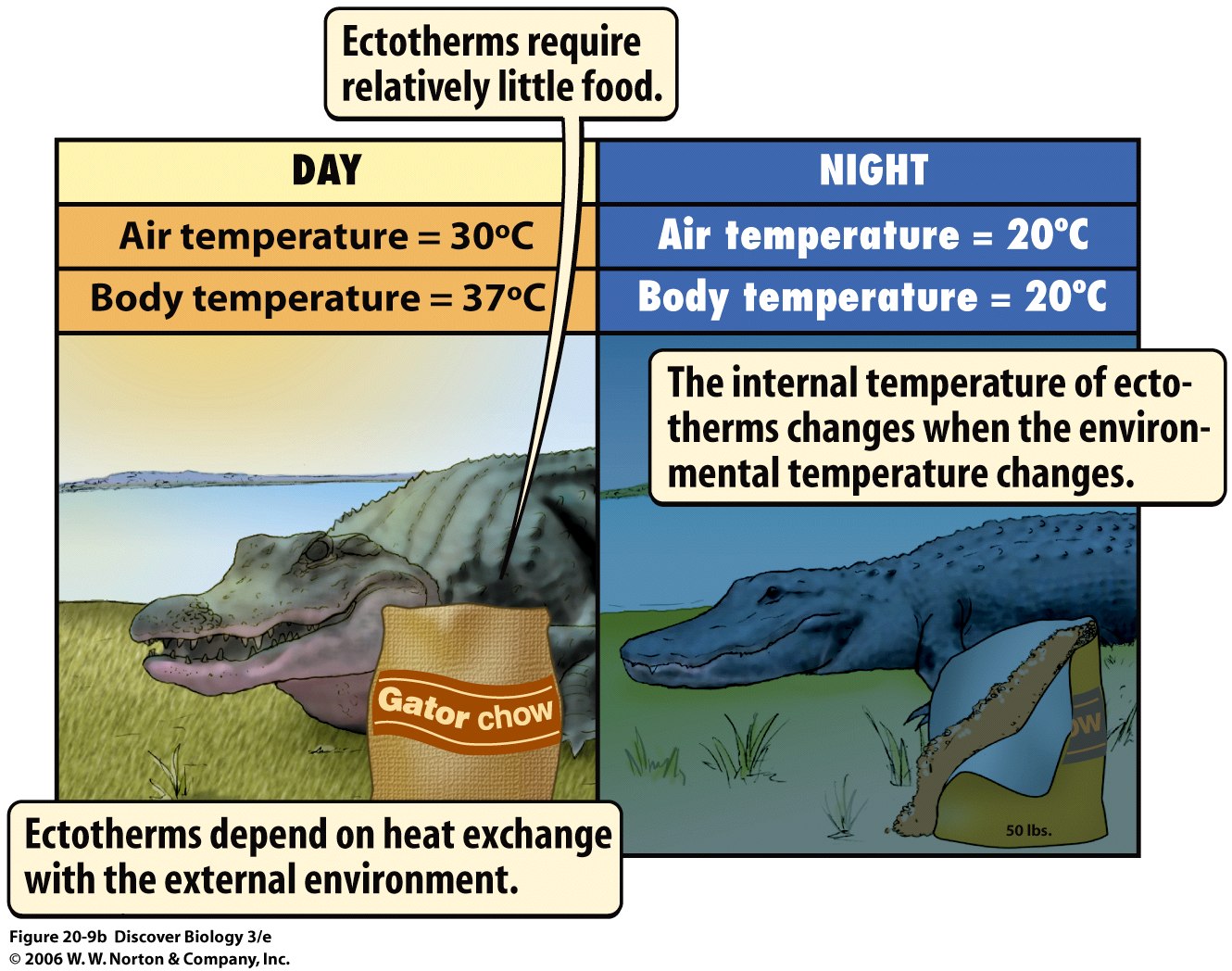BIO 7: Lecture 20-21 Preview
Large organisms need support structures to give them shape and keep cells from smashing other cells with their weight.
Different support materials have advantages and disadvantages.
Some common structures considered to be skeletons include
Energy needed to carry around different skeletons varies.
| Animal | Skeleton Type | % Body Weight Devoted to Skeleton |
| Clam | external shell | 30 |
| Spider | external chitin | 10 |
| Mammal | internal bone | 4 |
| Bony Fish | internal bone | 3 |
The vertebrate skeleton uses a number of compromises.



Skeletons also help animals move by acting as rigid levers pulled by muscles.

Living things are made of molecules, which function best under specific conditions; temperature and water concentration are especially important conditions. Homeostasis is the process of maintaining fairly constant internal conditions.
For homeostasis gain = loss
Water is gained and lost differently in water and on land.

Larger animals have internal mechanisms to maintain water content. Humans have an excretory (or urinary) system.
Heat is gained and lost in different ways in water and on land.

Some mechanisms for gaining and losing heat.
Endotherms (mainly birds and mammals) keep their body temperature fairly constant; ectotherms' body temperatures vary with the outside temperature.
Energy is required to maintain a constant body temperature. What is the endotherm's advantage?


The integumentary system helps to regulate temperature and prevent water loss.